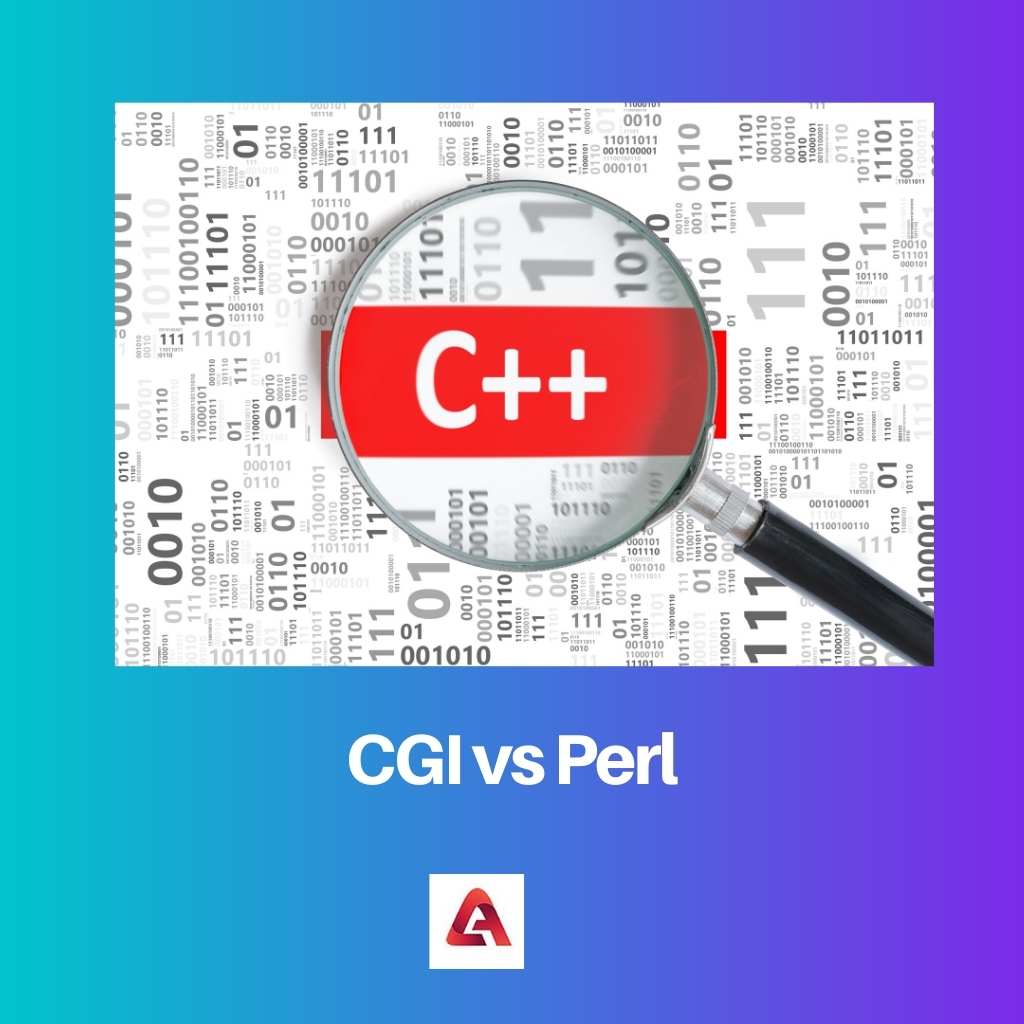The terms CGI and Perl are repeatedly anticipated as one. The connection between them both is not realized to the people. CGI Perl is commonly used to refer to both.
In actuality, both terms are different. Knowing distinctive features among them makes your understanding better about both the terms.
Key Takeaways
- CGI is a protocol for web servers to execute scripts, while Perl is a scripting language.
- Perl is a versatile language used for various tasks, whereas CGI specifically facilitates web server interactions.
- CGI can use multiple programming languages, including Perl, to create dynamic web content.
CGI vs Perl
CGI is a protocol for server-side communication with external programs, while Perl is a programming language that can be used for various tasks, including web development and CGI scripting. It’s worth noting that while Perl is associated with CGI, other languages and frameworks, such as PHP.

The CGI or gateway of standard interfaces is a way to interact with many different OS at the same place. It uses other procedures of interaction with the webserver.
This is a way for users to utilize a single interface to gain access to various media such as databases, picture generators, etc.
Perl is a highly dynamic and commonly used programming language. Most of the outlines of Perl emerged from the C programming language.
However, some of the features of Perl are taken from shell programming. Perl has a superb combination of features that ease the programmer’s stress in terms of dynamic CPU requirements and more memory requirements.
Comparison Table
| Parameters of Comparison | CGI | Perl |
|---|---|---|
| Definition | CGI provides a system interface using different programming languages. | Perl is a highly dynamic, general-purpose programming language. |
| Acronyms | The full form of CGI is the common gateway interface. | The full form of Perl is the Practical Extension and Reporting language. |
| Release Dates | CGI was formulated in the initial 1990s and has been used since then. | Perl was initially released in 1987, but the stable release was in 2021. |
| Flexibility | CGI is less flexible as compared to Perl | Perl is more flexible and adaptable to the various developer environments. |
| Unique Feature | A unique feature of backend hookups can be done using CGI. | Perl does not have the element of backend Hookups. |
What is CGI?
CGI is a set of rules of how the data can be exchanged between the web servers and the programming language script. CGI programs allow sending data in numerous audio clips, photos, documents, etc.
Most websites make the best use of CGI, having the fields for input. It allows websites to send or receive data from the database or send it to the database.
Similarly, users can also do this for all documents and media types. This way, they can present the desired data using CGI to the audience on the website.
Utilizing the hypertext transfer protocols, the client or user of CGI exchanges the data on its web server.
Depending on the request from the browser that is being operated on the client’s machine, the web browser can send or exchange data from its directory or the CGI program.
CGI web applications widely make use of the Perl programming language. Here there is the use of the script of Perl to get the response from HTTP.
Different languages are used as input to design CGI web applications similarly. But the Perl has proven to be adequate for the CGI.
Earlier, Perl was not a well-known programming language. But CGI made Perl so famous and known to the people. The robust regulation and string parsing ability made CGI and thus Perl more popular.
What is Perl?
Perl was initially developed by Larry wall in 1987. It was designed as the all-purpose Unix writing language. In the late 1990s, Perl became very popular among users. Perl has many features similar to other programming languages that it has taken from them.
The Text handling characteristic of Perl can be used for the generation of SQL queries such as arrays and automatic memory. The pearl can be used to customize each SQL’s arrays or hashes.
The data interpretation is made using the Perl database interface modules in Perl. The Database interface module delivers a single database-independent interface.
On the other hand, the Database driver provides 50 different interface databases simultaneously. Perl’s DBI module is primarily utilized via the DBIx class or Rose DB object.
In 2020, a programming language similar to Perl 5 emerged, named Raku. Later, Raku and Perl 5 diverged from each other. Now these both exist as distinctive platforms. Different teams manage both. It is moreover occasionally inferred as Perl 6.
There is one more form of Perl called Perl 7. This Perl 7 has backward compatibility with the original Perl 5 code. It is like an advanced step to Perl 5.

Main Differences Between CGI and Perl
- While working with the CGI, you have access to different languages, including Java, C++, C., Whereas Perl is an individual programming language.
- Backend hookups are a characteristic of CGI that allows accessing the backends. While using the Perl programming language, only you can do backend access.
- CGI provides interfaces in C++, Perl, and C languages. On the other hand, Using Perl, you only get the advantage of only one programming language.
- Rob Mac cool, George Phillips, Tony Sanders are the big names in drafting CGI. On the other hand, Perl was developed by only Larry Wall.
- CGI is commonly utilized to produce the desired output by processing information from the user. On the other hand, the Processing and scripting of the user’s data are done using Perl.
- https://books.google.com/books?hl=en&lr=&id=uWE-AwAAQBAJ&oi=fnd&pg=PR5&dq=difference+between+cgi+and+perl&ots=URtIIEoafE&sig=59YoR1ll861Jy4Q5fEqNBb8DsB8
- https://books.google.com/books?hl=en&lr=&id=F4zmNkwVL3cC&oi=fnd&pg=PP15&dq=perl+and+cgi&ots=c3A08L_N8r&sig=y2B_UCEVSlFEixkw3-wLDkG6bEM
